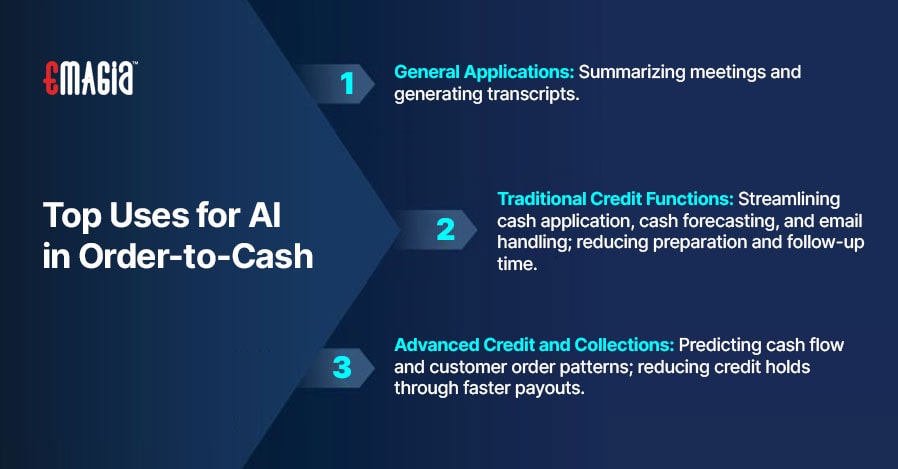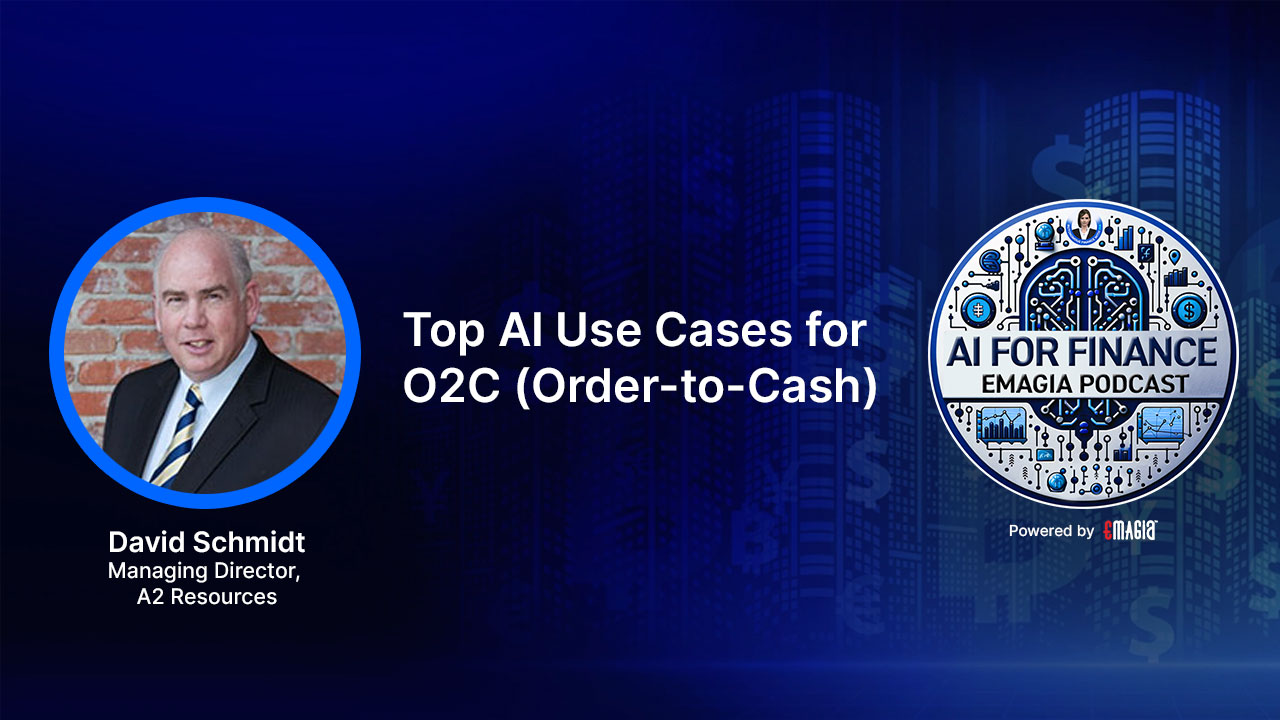Generative AI took the business community by storm in 2023, sparking a flurry of interest and prompting organizations to evaluate its potential uses. As we approach 2025, this evaluation period will give way to broader adoption as more companies embrace the technology. “The time has come to take advantage of it in terms of how we do things and how we might be able to do things better,” says David Schmidt, Managing Director at A2 Resources and former longtime contributor with Credit Today.
In the debut episode of the Emagia AI For Finance podcast series, Schmidt spoke about the growing role (and present) of automated collections and predictive analytics, among other autonomous finance and AI-fueled processes, as businesses recognize the transformative potential of AI. And while there are dangers to being among the earliest adopters, those who wait too long risk falling behind.
Those Who Wait Too Long to Adopt AI will be Left Behind
Right now, there is a mix of early adopters of the technology and those taking a wait-and-see approach. Schmidt sees a substantial advantage for those early adopters of AI, and as those successes are communicated it will be easier for others to jump on the bandwagon. In a case study, collections software helped a company in the sporting goods area get out from under their financial troubles and when other companies saw them drawing ahead, they, too, adopted the software.
Despite this progress, Schmidt notes that many companies may be missing out on AI’s potential due to a lack of information about its applications and benefits. Educating businesses about AI’s versatility will be key to helping bridge this gap.
Three Top Use Cases for AI
Schmidt sees numerous areas for AI usage – Three, in particular, have caught his eye of late. One is “general desktop,” such as ChatGPT, which can be used for many functions from writing outlines to rough drafts of reports to summarizing meetings and offering transcripts of recordings. This sort of “pocket secretary” function is the kind of thing that can save time for professionals, Schmidt notes.
A second use is for traditional credit functions: cash application and cash forecasting become easier with AI. So much manual activity can be reduced or eliminated with the help of AI, including handling of information coming in through email and other sources. Collections, payment, and invoicing software can reduce the time for preparation and follow-up.
According to Schmidt, typical credit managers spend three and a half to four hours per day responding to emails. AI can take the burden of that for delivery, invoice, and document requests. AI can read emails, extract information from numerous formats, find missing invoices, and send customized emails back to customers. Routing of emails can also be managed by AI.
A third interesting use focuses on more sophisticated credit applications and collections processes. AI can predict factors such as cash flow and when customers will place their next order. If an action triggers a credit hold, it can help to find ways to get payouts faster. Collection efficiency can be elevated to another level.
How to Optimize Deal Value in M&A Integrations with O2C Automation. Read eBook

Take the Lead with a Proactive Approach
“It makes us preventative rather than reactive,” Schmidt said. AI can improve order fulfillment and invoice accuracy with fewer deductions and allow them to come through more quickly.
What took a lot of number crunching in the past may be replaced with simply asking one’s AI application the right questions. Customer types can be summarized, with credit risks and trends fetched for each. As professionals become more responsive and skilled with the emerging technology, they will learn the right questions (Aka: “prompts”) to ask to better leverage the capabilities of AI.
The answers will be enlightening, Schmidt said, and will allow professionals handling OTC functions to go from reactive to proactive.
“That’s going to be a big benefit,” Schmidt said.
Shorten the O2C Cycle with Digital Invoicing & Payments. Read eBook
FAQs
What is Generative AI?
Generative AI refers to software that uses large language models to create high-quality text, images, and other content. OpenAI’s ChatGPT, which gained significant attention for its human-like writing capabilities, is a prime example of generative AI. This technology can take raw data and produce original content based on natural language inputs.
Consulting firm Gartner predicts that generative AI will become a general-purpose technology similar to electricity and the internet, with enterprise applications that include autonomous process execution, enhanced customer experiences, and improved productivity.
What is Cash Forecasting?
Cash forecasting is the process of estimating a company’s future financial position to ensure it can meet its obligations over a specific period. Data sources for cash forecasting include treasury management platforms, accounting and shared service centers, and business units like accounts payable and accounts receivable. By accurately forecasting cash flow, businesses can ensure financial stability and plan for future growth.
Integrated OTC Transformation for Global Shared Services Organizations. Watch On-Demand









